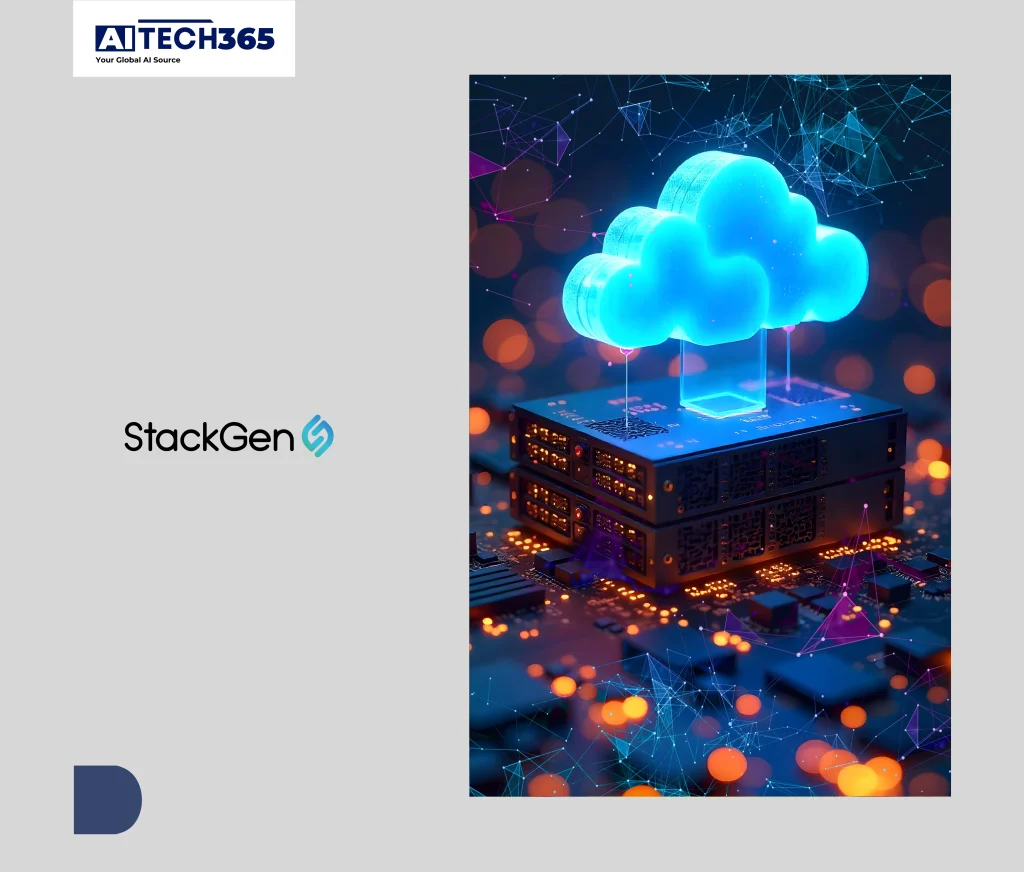StackGen, the pioneer in autonomous infrastructure technology, announced the launch of its industry-first Autonomous Infrastructure Platform an AI-powered platform featuring AI agents to build and manage cloud infrastructure with autonomous capabilities. As AI accelerates development velocity by 2-3x, traditional infrastructure management approaches create critical bottlenecks that cost enterprises over $20 billion annually industry-wide and $2.5M per 100 developers in lost productivity, as developers spend 23% of their time on infrastructure provisioning instead of building features. StackGen’s platform addresses this fundamental speed mismatch through AI agents that understand your specific infrastructure context and organizational standards, increasing velocity and reducing operational effort for developers and platform teams.
Industry analysts agree this shift toward AI-managed infrastructure is already underway. According to Gartner®, “By 2028, at least 15% of day-to-day IT infrastructure-related tasks will be executed semiautonomously by AI, up from zero percent in 2024″*.
“We’re pioneering a new category while the industry remains anchored to legacy infrastructure flows,” said Sachin Aggarwal, CEO of StackGen. “While AI transforms every aspect of business, infrastructure teams remain stuck with manual processes that can’t keep pace with AI-accelerated development. Our Autonomous Infrastructure Platform doesn’t just solve today’s problems it defines what enterprise infrastructure should look like in an AI-first world.”
“StackGen is among the first infrastructure vendors to deliver the combination of deterministic guardrails and LLM-enabled productivity that enterprise engineering teams demand. Their Autonomous Infrastructure Platform illustrates the shift from infrastructure as a static pipeline to an autonomous system enabled by intelligent agents, at a time when 70% of IT leaders plan to adopt AI-driven capabilities within the next 12 months,” said Dan Twing, President and COO, EMA (Enterprise Management Associates).
Autonomous Infrastructure: Infrastructure That Operates Itself
StackGen’s vision is empowering a seamless, intelligent future where infrastructure operates itself autonomous, resilient, and built for tomorrow. This vision is realized through four self-operating pillars delivered by specific AI agents that solve real enterprise infrastructure problems:
Self-Building Infrastructure automatically creates infrastructure from application intent through StackBuilder, which generates and launches compliant infrastructure from application intent with automated pipeline fixes. Building on StackGen’s existing deterministic platform foundation and recent innovation at PlatformCon with intent2infra which generates infrastructure from images, voice, files, or text StackBuild represents the evolution toward production-ready infrastructure generation with enterprise governance and proven automation workflows. The StackFinder agent will automatically discover and onboard existing infrastructure.
Self-Governing Infrastructure enforces policies instantly and consistently through StackGuard, which handles compliance and security posture management by scanning and detecting security and compliance policy violations and suggesting remediations across MARS-E, FedRAMP, and HIPAA requirements with continuous monitoring and automated remediation.
Also Read: E2B Secures $21M Series A to Power AI Agents for Fortune 100
Self-Healing Infrastructure autonomously detects and remediates issues through StackHealer, which handles production incident remediation by automatically triaging and conducting production incident investigations while reducing mean time to resolution to under 5 minutes, and StackAnchor, which performs drift detection and remediation by scanning and preventing configuration drift as soon as it occurs.
Self-Optimizing Infrastructure continuously balances cost and performance through StackOptimizer, which provides cost and performance optimization by analyzing infrastructure performance and cost, suggesting optimal sizing, re-sizing, or re-architecting to improve latency and efficiency.
StackGen’s agents deliver specific benefits across infrastructure teams: Developers accelerate deployment with StackBuild’s automated infrastructure generation, eliminating the need to learn complex Infrastructure as Code languages. Platform Engineers reduce support overhead while ensuring compliance through StackGuard, with StackAnchor eliminating configuration drift to minimize reactive work. Site Reliability Engineers resolve incidents faster with StackHealer’s automated remediation and root cause analysis, freeing them to focus on reliability improvements rather than firefighting. CTOs and VPs of Engineering gain organizational velocity and reduced operational risk through coordinated autonomous infrastructure that scales engineering productivity while maintaining enterprise governance and compliance.
Unlike many startups taking a tech-first approach, StackGen was built from real enterprise pain points identified through partnerships with leading companies, with each agent designed to solve specific use cases that infrastructure teams face daily.
“The infrastructure bottleneck has become the primary constraint on software delivery velocity,” said Asif Awan, CPO of StackGen. “Our autonomous infrastructure platform doesn’t just automate existing processes it fundamentally reimagines how infrastructure should work in an AI-first world, with specific agents solving the real problems our customers face every day.”
Multi-Agent Intelligence Architecture
StackGen’s technical architecture delivers autonomous infrastructure through three integrated layers where AI agents provide intelligence, ease of use, and time savings, while deterministic tools ensure reliability, proven results, and enterprise governance.
The AI Layer orchestrates intelligent infrastructure operations through three integrated components: AI Control Plane manages all AI agent coordination using advanced agent-to-agent communication, orchestrating complex infrastructure workflows from developer intent through deployment, monitoring, and remediation. When a developer submits application requirements, StackBuilder generates the infrastructure code, StackGuard validates security policies, and StackHealer sets up monitoring all working together seamlessly. Continuous Learning captures deployment patterns and outcomes to continuously improve AI decision-making and policy optimization across the organization.
The Foundation Layer provides the deterministic backbone through two essential components: Tools deliver proven Infrastructure-as-Code capabilities, state management, policy enforcement, and deployment orchestration that ensure reliable and repeatable operations. Knowledge maintains comprehensive organizational infrastructure patterns, compliance requirements, best practices, and historical context, including updates from the StackScribe agent which ensures that all learned knowledge is validated and generalized before being integrated into the organizational knowledge base. Together, these components supply context, policies, and controls to all AI agents, ensuring coordinated and compliant autonomous operations.
The Integration Layer seamlessly connects with existing technology stacks across cloud platforms including AWS, Microsoft Azure, Google Cloud Platform, and Kubernetes (EKS, AKS, GKE), data platforms such as Snowflake and Databricks, popular DevOps tools like GitHub, GitLab, Bitbucket and CI/CD pipelines, IaC frameworks including Terraform, OpenTofu, and Helm Charts with full import/export capabilities, and enterprise security protocols such as SAML 2.0, OIDC, LDAP, Active Directory, and GitHub/GitLab OAuth.
Source: PRNewswire

